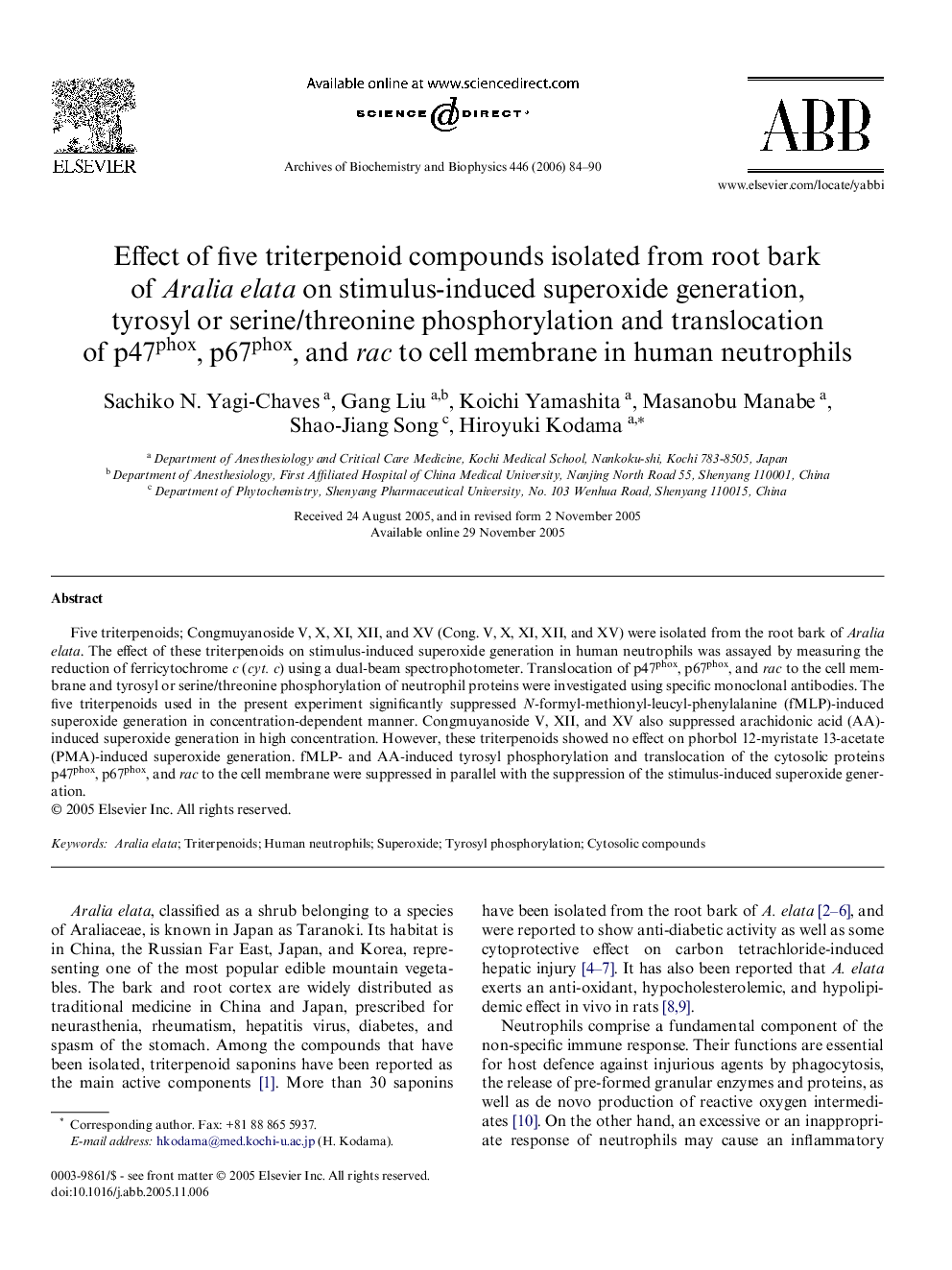| Article ID | Journal | Published Year | Pages | File Type |
|---|---|---|---|---|
| 1927632 | Archives of Biochemistry and Biophysics | 2006 | 7 Pages |
Five triterpenoids; Congmuyanoside V, X, XI, XII, and XV (Cong. V, X, XI, XII, and XV) were isolated from the root bark of Aralia elata. The effect of these triterpenoids on stimulus-induced superoxide generation in human neutrophils was assayed by measuring the reduction of ferricytochrome c (cyt. c) using a dual-beam spectrophotometer. Translocation of p47phox, p67phox, and rac to the cell membrane and tyrosyl or serine/threonine phosphorylation of neutrophil proteins were investigated using specific monoclonal antibodies. The five triterpenoids used in the present experiment significantly suppressed N-formyl-methionyl-leucyl-phenylalanine (fMLP)-induced superoxide generation in concentration-dependent manner. Congmuyanoside V, XII, and XV also suppressed arachidonic acid (AA)-induced superoxide generation in high concentration. However, these triterpenoids showed no effect on phorbol 12-myristate 13-acetate (PMA)-induced superoxide generation. fMLP- and AA-induced tyrosyl phosphorylation and translocation of the cytosolic proteins p47phox, p67phox, and rac to the cell membrane were suppressed in parallel with the suppression of the stimulus-induced superoxide generation.
